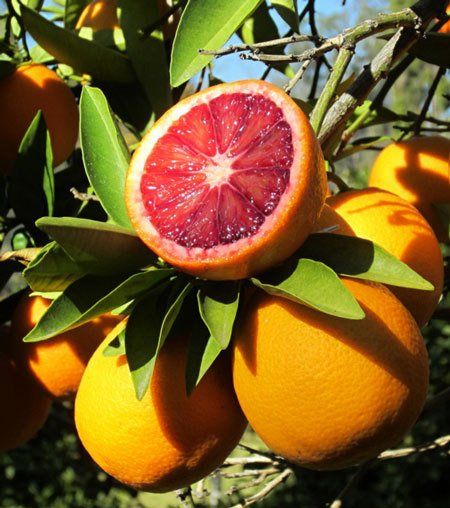The oddball of oranges, the blood orange isn’t just different in flesh color. It actually boasts benefits that orange flesh oranges don’t offer. In addition to the unique flavor, this citrus mutant is gifted in it’s own right. Here’s 5 things we bet you didn’t know about the blood orange.
- The anthocyanins that give it the red flesh color are uncommonly found in citrus and much more common in berries and flowers. These antioxidants have anti-inflammatory properties that help defend blood vessels from oxidative damage and reduce the accumulation of LDL cholesterol, and whole other host of health benefits. Read more about anthocyanins from Today’s Dietitian here.

Image from Science & Food UCLA
- Truly a winter fruit, the color of the blood orange develops during the cold weather at night.
- Originating in Sicily, it’s believed that blood oranges were a mutation, possibly of the tangelo and pomelo. Blood oranges actual have protected geographical status in Italy.
- There are 15 different varieties: Tarocco, Sanguinello, Moro, Matlese, Khanpur, Washington Sanguine, Ruby Blood, Sanguina Dobla Fina, Delfine, Red Valencia, Burris Blood Valencia, Vaccaro, Sanguine grosse ronde, Entra Fina, and Sanguinello a pignu. The first three being the most common.
- Having a raspberry like flavor, they pair well with leafy greens, especially bitter varieties, as the sweetness balances the flavors. In my opinion, beets are a fantastic fit as well. Here’s one of our favorite salads.
Natural mutation is a good thing and we love reaping the benefits of Mother Nature’s gifts.



